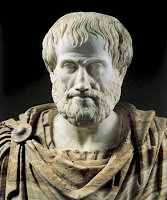Corporate Social Responsibility (CSR) is a relatively recent phenomenon imbibed in corporate business culture today, although the very thought that organisations do have a social responsibility had begun earlier.
In today's era of global competition, declining brand differentiation and increasing media clutter, companies are going beyond the conventional Public Relations and marketing policies to increase the value of intangible assets. Today, brands must be inspirational in a socially responsible way to all stakeholders. To achieve the same, CSR has become more common in business practices. Organisations now integrate CSR initiatives into their communication plan to build and sustain a competitive advantage.

The totality of CSR can be best understood by three words : 'corporate' , 'social' and 'responsibility'while CSR is a concept whereby organisations consider the interests of the society by taking responsibility for the impact of their activities on customers, employees. shareholders, communities. Companies have realised the fact that it is an investment with multiple benefits and CSR is no more viewed as a liability on corporate resources. The social responsibility stems from the fact that all organisations work in the interests of the public to cater to the market demand by providing products and services. For the organisations to profit or gain through its efforts, it has to first achieve the acceptance and approval of the people. Many organisations through getting profit from society do not show their concern for the latter's welfare and thereby end up having problems. Therefore, over the past few years stakeholders (employees, community, suppliers and shareholders) today are redefining the role of corporates taking into account corporates' broader responsibility towards society and environment. As a result of this shift (from purely economic to 'economic with an added social dimension') corporates today, are endorsing the term 'Corporate Social Responsibility'

The 'Ethical Model' of CSR was revived and reinterpreted by 'Father of Nation' Mahatma Gandhi

The 'Statist Model' of CSR came into being under the aegis of Jawahar Lal Nehru
While some perceive CSR to be a commitment of a company to manage its various roles in society as producer, employer, customer and citizen in a responsible manner, others make it synonymous with Corporate Responsibility (CR) or Corporate Citizenship or Social Action Programme (SAP). Of late, the term has also been started to link up with Triple Bottom Line Reporting (TBL) which essentially measures an enterprise's performance against economic, social and environmental indicators.
CSR at India


India ranks 4th in Asia when it comes to laying heavy emphasis on corporate social responsibility. Several major CSR initiatives have been launched in India since the mid 1990s. The term CSR itself came in to common use in the early 1970s although it was seldom abbreviated but by late 1990s the concept was fully recognised.
Notable efforts in terms of India's CSR initiatives have come from the Tata Group, Infosys, Bharti Enterprises, ITC Welcome group, Indian Oil Corporation and many more.
This is how Vodafone does CSR

Vodafone group plc happens to be one brand / company which has been pretty prominent with its CSR initiatives. Having won an Outstanding Achievement in CSR Award for its project'World of Difference' - giving four people in Qatar the opportunity to work for a local cause of their choice with their costs paid by Vodafone, this company associated itself with the Commonwealth Games in Delhi, India, where it introduced e-rick - hybrid vehicles designed Eco-Active, offering a pollution free alternative mode of transportation in the national capital in India. Barring this project Vodafone committed $10 million to the Vodafone India Foundation back in 2007. This foundation partners with NGOs to provide support for projects associated with education.
Achieving Sustainability

One issue which is time and again associated with CSR is the sustainability issue. Achieving sustainability is impractical without managing all aspects of life cycle. The sustainability dialogue has made huge progress in the corporate setting from the traditional CSR. In this light, sustainable sourcing has emerged as a key dimension alongside traditional CSR to measure and track sustainability initiatives. CSR aims to achieve overall sustainability considering the economic, ecology and social aspects so as to maximise and safeguard 'profit, planet and people'. The TBL concept captures the range of values and criteria for measuring organisational success and sustainability performance. So corporates now are incporating the sustainable sourcing practices into their business model depending on demand from their consumer and / or stakeholders. The term sustainable sourcing is interchangeable used with Sustainable purchasing, Green Purchasing, Responsible Purchasing and Ethical Purchasing by the firms to produce goods or services.
CSR vs Greenwashing

Coca-Cola, India's one of the largest beverage companies, realised that CSR had to be an integral part of its corporate agenda. Thus, it decided to implement a wide range of initiatives to improve the quality of life to its customers, the workforce and society at large. however, it came under severe criticisms from activists and environmental experts who charged it with depleting groundwater resources in the areas in which its bottling plans were located, thereby affecting the livelihood of poor farmers. The company was already involved in unethical business practices in developing countries which let to it becoming one of the most boycotted companies in the world. Coca-Cola then planned to become water neutral in India by 2009 as part of its global strategy of achieving water neutrality. But criticism against the company did not die down and critics felt that Coca-Cola was spending millions of dollars to project a 'green' and 'environment-friendly' image of itself. They felt it was an attempt at greenwashing as Coca-Cola's business practices in India had tarnished its brand image not only in India but also globally.
























